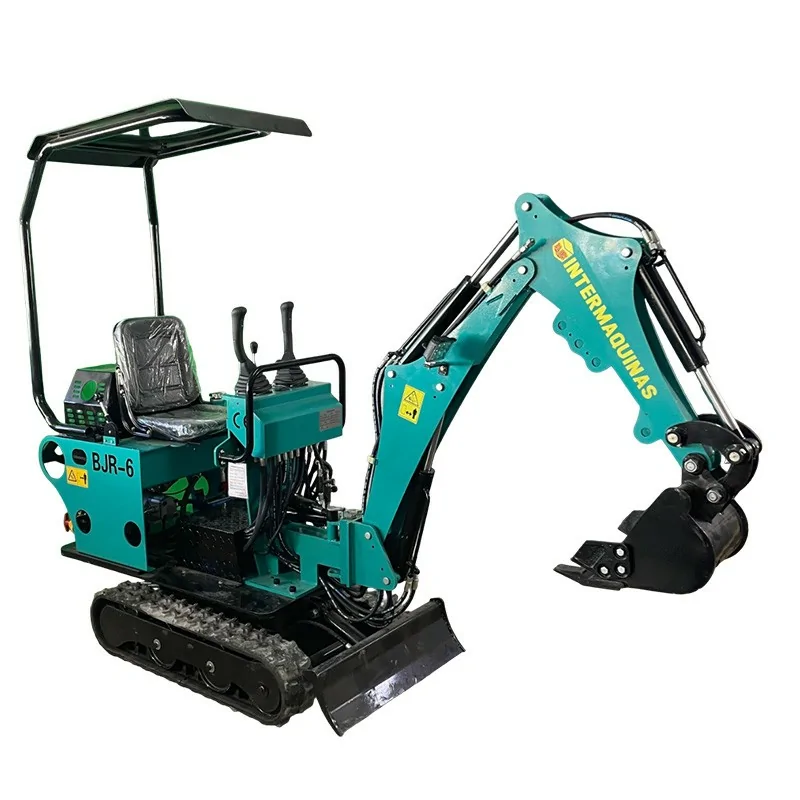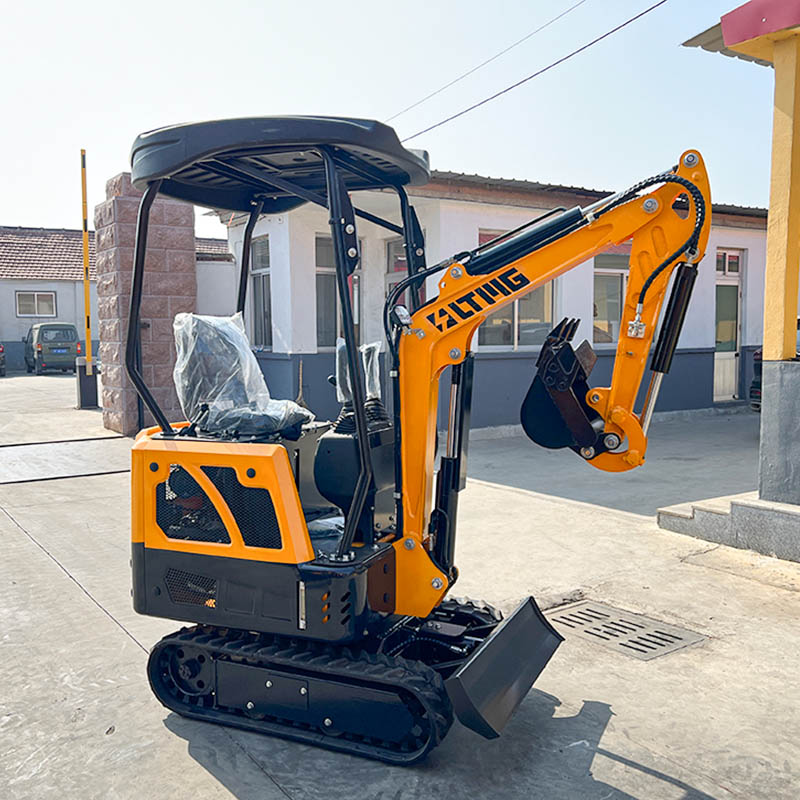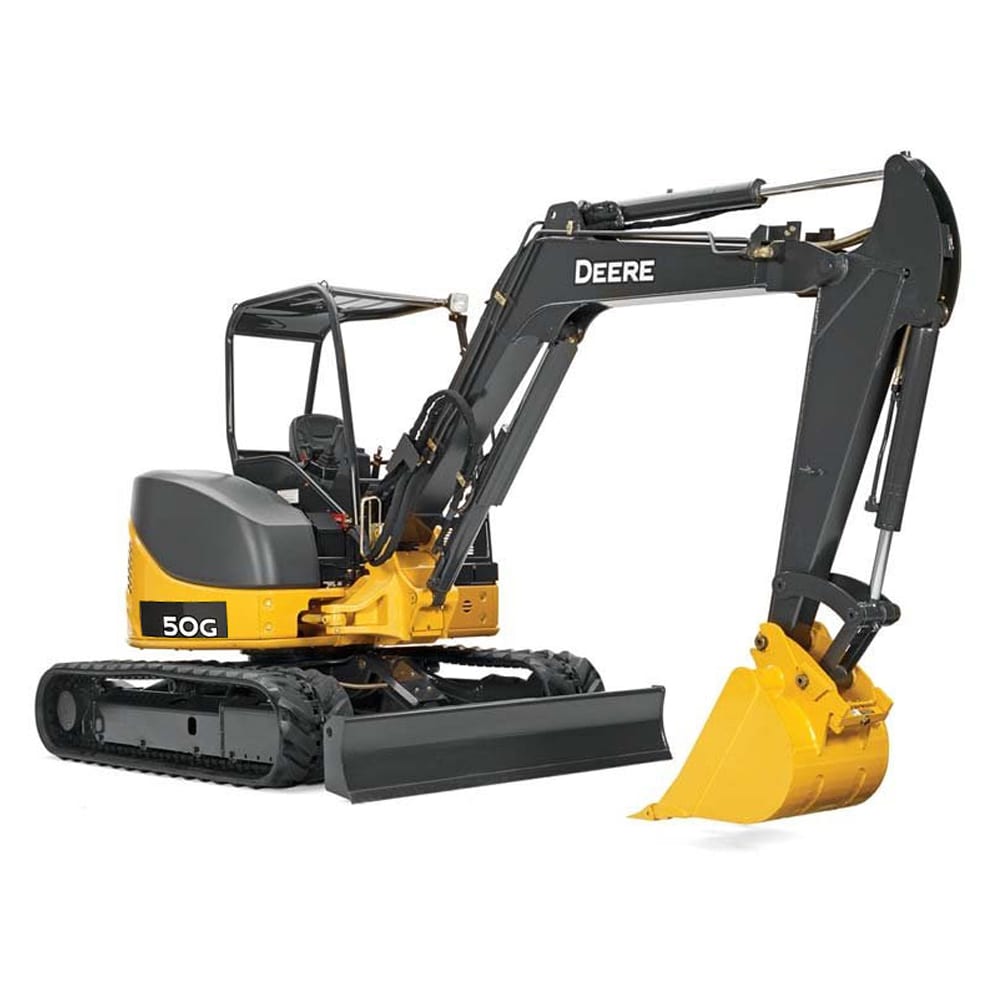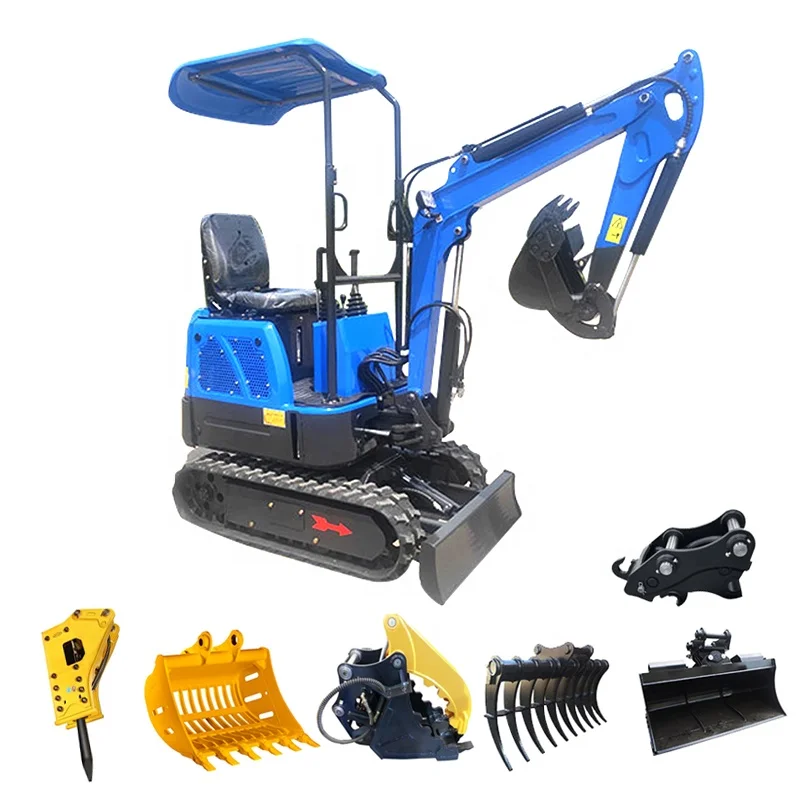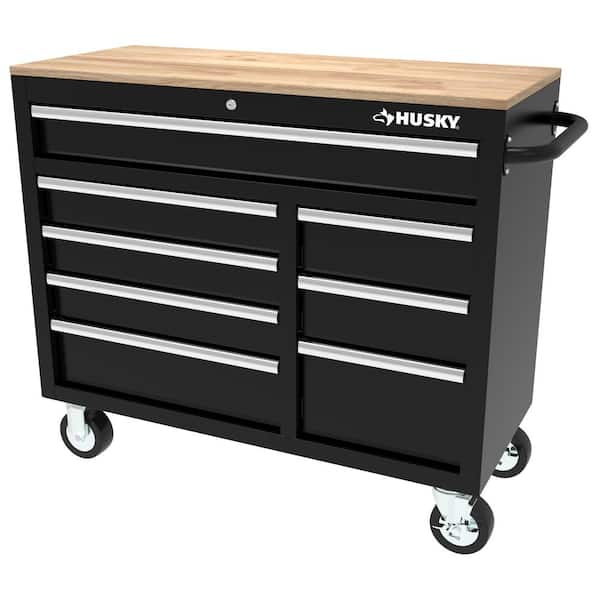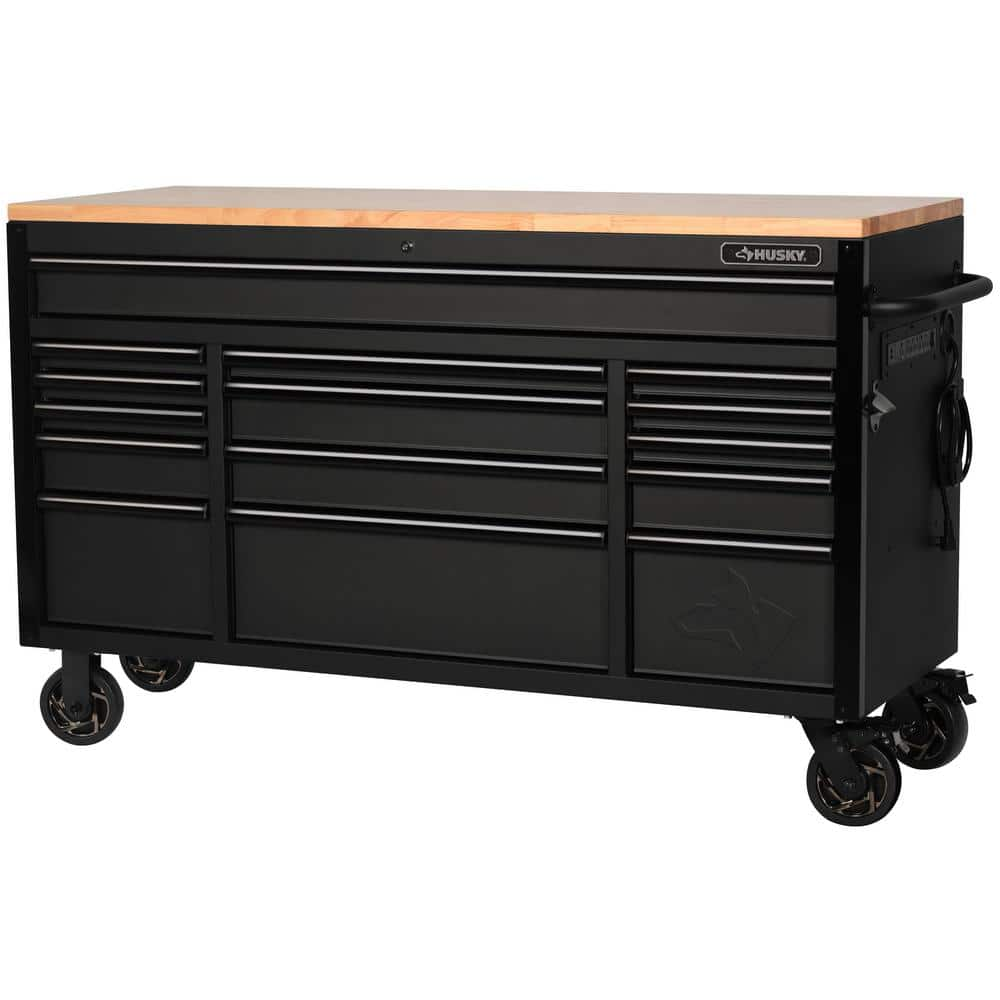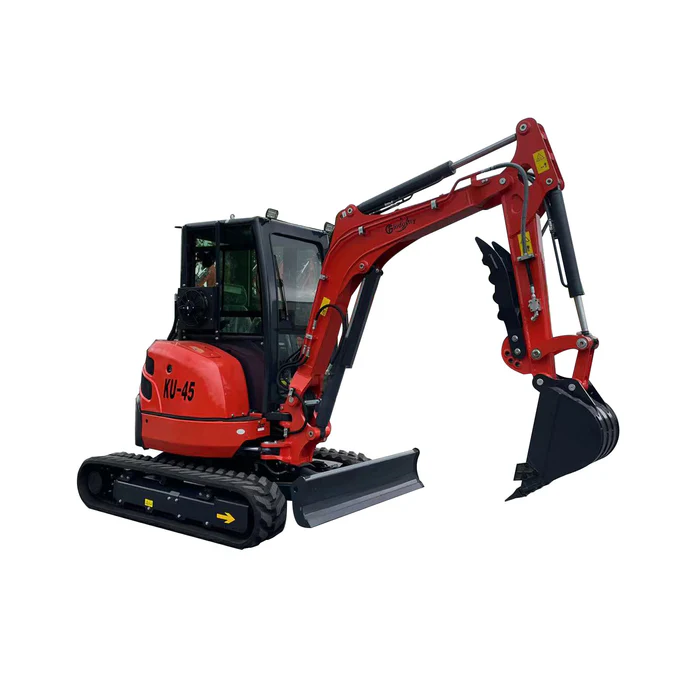
The Mini Excavator: Versatile & Powerful for Construction Projects
Introduction
Mini excavator has become an essential piece of equipment in the construction industry, offering a wide range of capabilities in a compact and versatile package. As the name suggests, mini excavators are smaller in size compared to their larger counterparts, making them ideal for navigating tight spaces and performing tasks with precision and agility. In this comprehensive guide, we will delve into the various aspects of mini excavators, including their features, applications, benefits, maintenance, and purchasing considerations.
Part 1: Features of Mini Excavators
Level 1: Engine and Hydraulics
Mini excavators are typically powered by diesel engines, providing the necessary strength and efficiency to operate the machine’s hydraulic system. The hydraulics are responsible for powering the excavator’s movements, including the ability to dig, lift, and rotate. Some models may also feature advanced hydraulic systems that offer increased performance and fuel efficiency.
Level 2: Attachments and Accessories
One of the key benefits of mini excavators is their compatibility with a wide variety of attachments and accessories. These can include buckets of different sizes, hydraulic hammers, augers, grapples, and thumbs, among others. The ability to quickly and easily switch between attachments makes mini excavators highly adaptable for different tasks and job requirements.
Part 2: Applications of Mini Excavators
Level 1: Construction and Landscaping
Mini excavators are commonly used in construction and landscaping projects for tasks such as digging trenches, excavating foundations, and grading or leveling terrain. Their compact size allows them to maneuver in tight areas, making them ideal for urban construction sites and residential landscaping projects.
Level 2: Utilities and Infrastructure
In addition to construction and landscaping, mini excavators are often utilized for utility and infrastructure work, such as installing or repairing water, sewer, and electrical lines. Their precise digging capabilities and ability to access confined spaces make them indispensable for these types of projects.
Part 3: Benefits of Mini Excavators
Level 1: Maneuverability and Accessibility
The compact size of mini excavators enables them to access tight or confined spaces that larger excavators cannot reach. This makes them extremely valuable for urban construction projects, residential areas, and other sites with limited maneuvering space.
Level 2: Versatility and Efficiency
Mini excavators offer a high level of versatility due to their compatibility with various attachments and accessories. This allows operators to perform a wide range of tasks with a single piece of equipment, increasing efficiency and reducing the need for multiple machines on a job site.
Part 4: Maintenance of Mini Excavators
Level 1: Regular Inspections and Lubrication
As with any piece of heavy equipment, regular maintenance of mini excavators is crucial to ensure optimal performance and longevity. This includes conducting routine inspections, checking fluid levels, and lubricating moving parts to prevent wear and tear.
Level 2: Preventive Maintenance and Repairs
In addition to routine maintenance, mini excavators should undergo preventive maintenance at scheduled intervals to address any potential issues before they escalate. This can include replacing worn components, servicing the hydraulic system, and addressing any performance issues that may arise.
Part 5: Purchasing Considerations for Mini Excavators
Level 1: Size and Weight Class
When considering the purchase of a mini excavator, it’s important to determine the appropriate size and weight class for the intended applications. Different models offer varying capabilities in terms of digging depth, reach, and lifting capacity, so it’s crucial to select a machine that aligns with the specific requirements of the job.
Level 2: Brand Reputation and Dealer Support
Choosing a reputable brand with a history of quality and reliability is essential when purchasing a mini excavator. Additionally, evaluating the level of support provided by dealers in terms of parts availability, service, and warranty coverage can significantly impact the overall ownership experience.
Part 6: Benefits of Mini Excavators
Mini excavators are versatile and powerful machines that offer a wide range of benefits for various construction and landscaping projects. One of the main advantages of mini excavators is their compact size, which allows them to access and work in tight spaces that larger excavators cannot reach. This makes them ideal for residential and urban construction projects where space is limited.
Another benefit of mini excavators is their ease of transportation. Their lightweight and compact design allows them to be easily transported from one job site to another, reducing downtime and increasing efficiency. In addition, mini excavators are equipped with advanced technology and features that improve productivity and precision. Such as hydraulic systems, variable track width, and ergonomic controls.
Mini excavators are also cost-effective due to their lower fuel consumption and maintenance costs compared to larger models. They require less manpower to operate and can perform a wide range of tasks, including digging, trenching, grading, demolition, and more. This makes them a valuable investment for contractors and rental companies looking to increase their capabilities and profitability.
Overall, the benefits of mini excavators make them an essential tool for a variety of construction and landscaping projects. Their compact size, ease of transportation, advanced features, and cost-effectiveness make them an ideal choice for both professionals and DIY enthusiasts.
Part 7: Uses of Mini Excavators
Mini excavators are versatile machines that can be used for a wide range of applications in the construction and landscaping industry. Their compact size and powerful capabilities make them ideal for various tasks, including earthmoving, trenching, demolition, and more. Additionally, mini excavators can be equipped with a variety of attachments to further expand their versatility and functionality.
One of the most common uses of mini excavators is digging and trenching. Their compact design allows them to access tight spaces and maneuver with precision. Making them suitable for excavation work in urban and residential areas. Mini excavators are also used for landscaping projects, such as digging holes for planting trees, shrubs, and other vegetation.
In addition to digging and trenching, mini excavators are often used for material handling and transportation. They can be equipped with buckets, forks, and grapples to move and load materials such as soil, gravel, rocks, and debris. Mini excavators are also used for demolition work, such as breaking concrete. Removing structures, and clearing debris.
Furthermore, mini excavators are used for grading and leveling tasks, such as creating slopes, terraces, and foundations. Their advanced hydraulic systems and adjustable track width allow for precise control and accuracy when shaping the terrain. Overall, the versatility and capabilities of mini excavators make them an essential tool for a wide range of construction and landscaping projects.
Part 8: Maintenance Tips for Mini Excavators
Proper maintenance is essential for ensuring the optimal performance and longevity of mini excavators. Routine maintenance and care can help prevent costly repairs and downtime. As well as it can ensure the safety of operators and bystanders. Here are some maintenance tips for mini excavators:
- Regular inspections: Conduct daily, weekly, and monthly inspections of the mini excavator to check for signs of wear, damage, or fluid leaks. Inspect the hydraulic systems, tracks, engine, and attachments for any issues that may affect performance.
- Fluid checks and changes: Check the levels of engine oil, hydraulic fluid, and coolant regularly and top them off as needed. Follow the manufacturer’s recommendations for fluid changes and use high-quality oils and lubricants.
- Cleaning and lubrication: Keep the mini excavator clean and free of dirt, debris, and corrosion. Regularly grease the moving parts, tracks, and attachments to reduce friction and prevent premature wear.
- Track maintenance: Inspect the tracks for wear and tear, adjust the tension, and replace any damaged or worn components. Proper track maintenance is crucial for ensuring stability, traction, and maneuverability.
- Filter replacements: Regularly replace the air, fuel, and hydraulic filters to maintain the cleanliness and efficiency of the mini excavator’s systems. Clean filters help prevent contamination and prolong the life of the engine and hydraulic components.
By following these maintenance tips and conducting regular servicing and repairs, mini excavator owners and operators can ensure the reliability, safety, and performance of their machines. Proper maintenance practices also contribute to the overall productivity and profitability of construction and landscaping projects.
Conclusion
In addition to their versatility and maneuverability, mini excavators are also known for their fuel efficiency and low operating costs. Their compact size and lightweight design make them easy to transport to and from job sites. Reducing transportation expenses and increasing productivity.
Overall, mini excavator is an essential piece of equipment in the construction and landscaping industries, providing a versatile, efficient, and cost-effective solution for a wide range of excavation and material handling tasks. Their compact size, maneuverability, and versatility make them an invaluable asset for any construction or landscaping project.
Mini excavators have solidified their place as indispensable tools in the construction and landscaping industries. Offering a combination of power, versatility, and maneuverability in a compact package. Their ability to perform a wide range of tasks with precision and efficiency makes them a valuable asset for any job site. Understanding their features, applications, benefits, maintenance requirements, and purchasing considerations. Operators and contractors can make informed decisions regarding the use and acquisition of mini excavators.
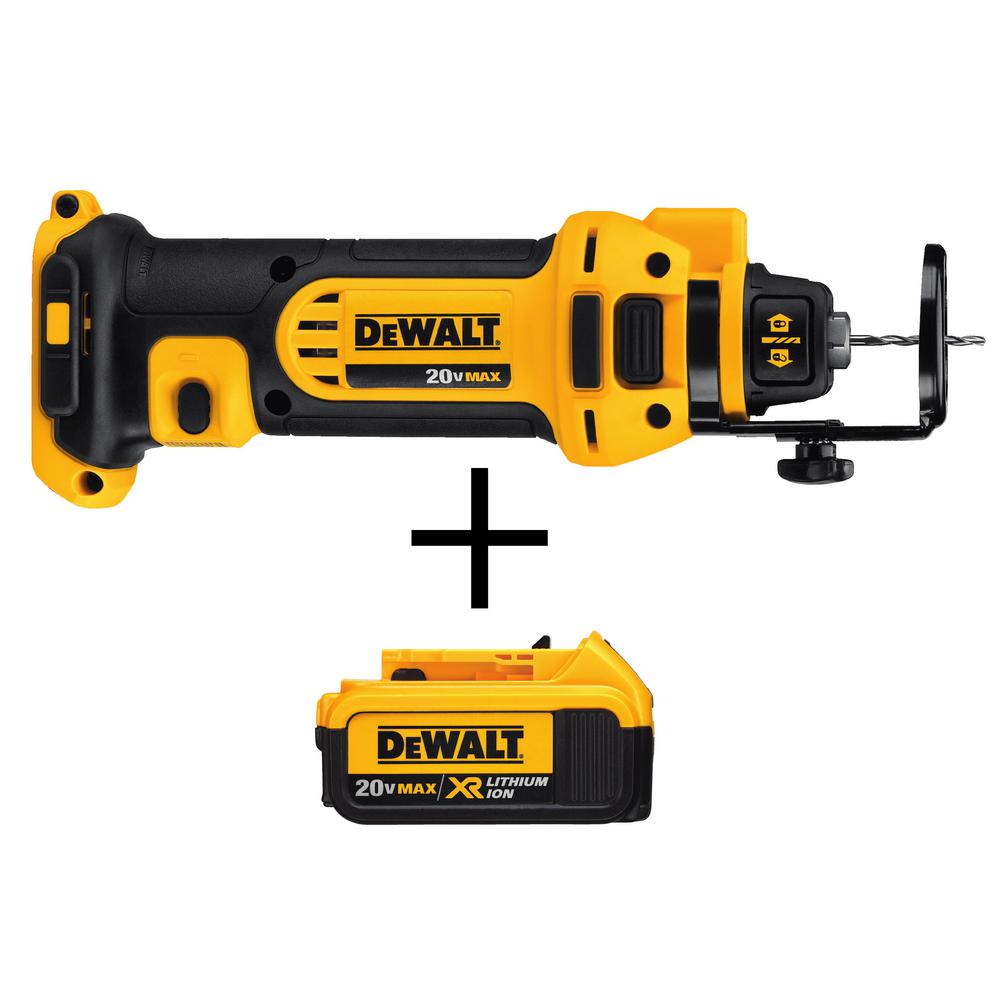
Unleash the Power of Precision with the Dewalt Rotary Tool
Introduction
Dewalt is a renowned brand in the power tool industry, known for its innovative and reliable products. One of its exceptional offerings is the Dewalt rotary tool, designed to meet the needs of professionals and DIY enthusiasts alike. This versatile tool is a game-changer when it comes to precision and efficiency in various applications. In this article, we will delve deep into the features, benefits, and applications of the Dewalt rotary tool, and explore how it can elevate your projects to the next level.
Part 1: Understanding the Dewalt Rotary Tool
Level 1: Overview of Dewalt Rotary Tool
The Dewalt rotary tool is a compact and powerful device that offers a wide range of functionalities, making it an indispensable asset in any toolbox. It is designed to accommodate various attachments, allowing users to perform tasks such as cutting, grinding, polishing, and more with ease and precision.
Level 2: Key Features of the Dewalt Rotary Tool
The tool is equipped with a robust motor that delivers high performance, ensuring consistent power and speed for efficient operation. Additionally, it features a variable speed control, enabling users to adjust the tool’s RPM to suit different applications. The ergonomic design and comfortable grip make it easy to handle, enhancing user control and reducing fatigue during extended use.
Part 2: Versatility in Applications
Level 1: Cutting and Carving
The Dewalt rotary tools are a versatile cutting and carving tool, capable of handling various materials such as wood, plastic, and metal. Its compatibility with cutting wheels, bit accessories, and attachments allows for precise and intricate cuts, making it ideal for intricate woodworking and crafting projects.
Level 2: Grinding and Polishing
With the right attachments, the Dewalt rotary tools becomes a proficient grinding and polishing tool. It can be used to shape and smoothen rough surfaces, remove imperfections, and polish metals and other materials to a flawless finish. The tool’s variable speed control ensures that users can achieve the desired results with utmost precision.
Part 3: Benefits of Using the Dewalt Rotary Tool
Level 1: Efficiency and Accuracy
The Dewalt rotary tools excels in providing unmatched efficiency and accuracy in various tasks. Whether it’s cutting, grinding, or polishing, the tool’s precision and control enable users to achieve professional-quality results. Its compact size and maneuverability allow for intricate work in tight spaces and hard-to-reach areas.
Level 2: Durability and Reliability
Dewalt is synonymous with durability and reliability, and the rotary tool is no exception. Built with high-quality materials and engineering, the tool is designed to withstand heavy-duty use and provide consistent performance over time. This ensures that users can rely on it for their most demanding projects with confidence.
Part 4: Choosing the Right Attachments
Level 1: Cutting Attachments
The Dewalt rotary tool supports a variety of cutting attachments, including cutting wheels, drill bits, and rotary saws. These attachments are designed to deliver precise and clean cuts in different materials, offering versatility and flexibility in a wide range of cutting applications.
Level 2: Polishing Attachments
For polishing and finishing tasks, the Dewalt rotary tool can be paired with attachments such as sanding drums, polishing pads, and buffing wheels. These attachments enable users to achieve smooth and lustrous surfaces, whether it’s for metalworking, woodworking, or other crafts.
Part 5: Maintenance and Care
Level 1: Cleaning and Lubrication
Proper maintenance and care are essential to ensure the longevity and performance of Dewalt rotary tools. Regular cleaning and lubrication of the tool’s components and accessories help prevent wear and tear, as well as ensure smooth and efficient operation.
Level 2: Storage and Handling
When not in use, the rotary tool should be stored in a clean and dry environment, away from dust and moisture. Proper handling and storage help protect the tool from damage and maintain its precision and reliability for years to come.
Part 6: Accessories and Attachments for DeWalt Rotary Tool
DeWalt rotary tools are versatile and can be used for a variety of applications, thanks to a wide range of accessories and attachments available. With the right accessories, you can turn your rotary tool into a precision cutting tool, a powerful grinder, a high-speed polisher, and more. DeWalt offers a selection of cutting wheels, grinding stones, sanding discs, polishing pads, and wire brushes to meet your needs.
In addition to the standard accessories, DeWalt also offers specialized attachments that can expand the capabilities of your rotary tool. For example, the flex shaft attachment allows for greater precision and control, making it ideal for intricate detail work. The keyless chuck attachment makes it easy to change accessories quickly and without the need for additional tools. There are also attachments for routing, drilling, and carving, giving you even more options for using your DeWalt rotary tool.
When choosing accessories and attachments for your DeWalt rotary tools, it’s important to consider the specific tasks you’ll be performing and select the right tools for the job. With the right accessories and attachments, your DeWalt rotary tool can become an indispensable tool for a wide range of applications.
Part 7: Maintenance and Care for Your DeWalt Rotary Tool
Proper maintenance and care are essential for keeping your DeWalt rotary tool in top condition and ensuring reliable performance. Regular maintenance can help prevent wear and tear, prolong the life of your tool, and maintain its precision and functionality. Here are some tips for maintaining and caring for your DeWalt rotary tool:
- Keep your rotary tool clean by regularly wiping it down with a soft, dry cloth to remove dust and debris.
- Check the carbon brushes regularly and replace them when worn down to ensure proper electrical contact and prevent damage to the motor.
- Lubricate the moving parts of your rotary tool, such as the shaft and bearings, to reduce friction and prevent wear.
- Store your rotary tool in a clean and dry environment to prevent rust and corrosion.
By following these maintenance tips and taking care of your DeWalt rotary tools, you can ensure that it continues to perform at its best for years to come.
Part 8: Safety Tips for Using Your DeWalt Rotary Tool
While DeWalt rotary tools are versatile and powerful, they can also pose certain safety risks if not used properly. To ensure safe and effective use of your rotary tool, it’s important to follow these safety tips:
- Always wear eye protection when using your rotary tool to prevent dust and debris from entering your eyes.
- Use the appropriate accessories and attachments for the task at hand, and make sure they are securely attached to the tool before use.
- Keep your hands and fingers away from the rotating parts of the tool, and always turn off the tool and unplug it before making any adjustments or changing accessories.
- Use a firm grip and maintain control of the tool at all times, especially when working with high-speed accessories such as cutting wheels or grinding stones.
- Work in a well-ventilated area and wear a dust mask when working with materials that produce dust or debris.
By following these safety tips, you can minimize the risk of injury and ensure safe and effective use of your DeWalt rotary tool.
Conclusion
The Dewalt rotary tool is a force to be reckoned with when it comes to precision, versatility, and performance. With its array of features, benefits, and applications, it has become an invaluable asset for professionals and DIY enthusiasts across various industries. Whether you’re cutting, grinding, polishing, or tackling intricate tasks, this powerhouse tool is sure to elevate your projects to new heights. Invest in the Dewalt rotary tools today and unleash the power of precision in your work.
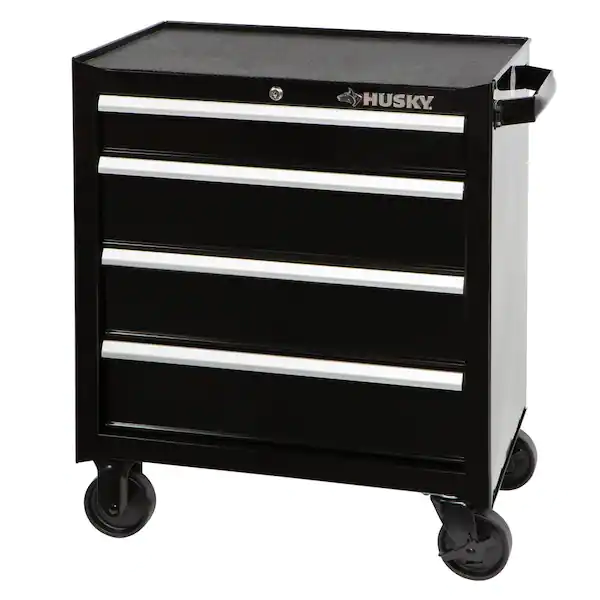
The Ultimate Guide to Home Depot Husky Tool Boxes
Introduction
When it comes to organizing and storing your tools, a high-quality tool box is a must-have. Home Depot offers a wide range of tool boxes, but one brand that stands out is the Husky tool box. Known for its durability, versatility, and functionality, the Husky tool box is a popular choice among DIY enthusiasts and professionals alike. In this comprehensive guide, we will explore everything you need to know about Home Depot’s Husky tool boxes, including their different models, features, and benefits.
Part 1: Understanding the Husky Tool Box
Level 1: Introduction to the Husky Tool Box
The Husky tool box is a line of storage solutions designed to keep your tools and accessories organized. Available in various sizes and configurations, these tool boxes are built to withstand the rigors of daily use, making them ideal for both home and professional use. With their durable construction and innovative features, Husky tool boxes have become a go-to choice for individuals looking for reliable and secure tool storage solutions.
Level 2: Different Models of Husky Tool Boxes
Home Depot offers a wide range of Husky tool boxes to cater to different needs and preferences. Some of the most popular models include the Husky Connect Rolling System, the Husky 20-inch Tool Box, the Husky 22-inch Cantilever Pro Tool Box, and the Husky 52-inch Rolling Tool Box. Each model comes with its own set of features and benefits, allowing users to choose the one that best fits their requirements.
Part 2: Features of the Husky Tool Box
Level 1: Key Features of the Husky Tool Box
One of the key features of the Husky tool box is its robust construction. High-quality materials, such as heavy-duty plastic, aluminum, and steel, these tool boxes are built to withstand rough handling and harsh working environments. They also come with secure locking mechanisms to protect your tools from theft and unauthorized access.
Level 2: Innovative Design and Storage Solutions
In addition to its durability, the Husky tool box also boasts innovative design features and storage solutions. Many models come with removable trays, compartments, and organizers to keep your tools and accessories neatly arranged. Some tool boxes also feature built-in power strips and USB ports for added convenience, allowing you to charge your devices and power tools on the go.
Part 3: Benefits of Using a Husky Tool Box
Level 1: Durability and Longevity
One of the primary benefits of using a Husky tool box is its durability and longevity. Unlike flimsy and cheaply-made tool boxes, Husky models are designed to withstand heavy use and abuse, ensuring that your tools remain safe and secure for years to come. This makes them a cost-effective investment for both home and professional use.
Level 2: Versatility and Portability
Another benefit of the Husky tool box is its versatility and portability. With features such as wheels, telescopic handles, and compact designs, these tool boxes are easy to transport and maneuver, making them ideal for projects on the go. Whether you’re working in your garage, at a job site, or on a DIY project, a Husky tool box offers the flexibility and mobility you need.
Part 4: Tips for Choosing the Right Husky Tool Box
Level 1: Consider Your Storage Needs
When choosing a Husky tool box, it’s important to consider your storage needs. Think about the types of tools and accessories you need to store, as well as the amount of space available in your garage or workspace. Home Depot offers Husky tool boxes in various sizes and configurations, so make sure to choose one that suits your specific requirements.
Level 2: Assess the Features and Accessories
It’s also essential to assess the features and accessories that come with the Husky tool box. Look for models with ample storage compartments, trays, and organizers to keep your tools neatly arranged. Consider other features such as built-in power outlets, USB ports, and weather-resistant seals for added functionality and convenience.
Part 5: Maintenance and Care for Your Husky Tool Box
Level 1: Regular Cleaning and Inspection
To ensure the longevity of your Husky tool box, it’s important to perform regular cleaning and inspection. Wipe down the exterior and interior of the tool box with a damp cloth to remove dust, debris, and stains. Inspect the locking mechanisms, hinges, and handles for any signs of wear and tear, and lubricate them as needed to maintain smooth operation.
Level 2: Proper Storage and Handling
Proper storage and handling are also crucial for maintaining your Husky tool box. Avoid overloading the tool box with excessive weight, as this can cause damage to the structure and components. Store the tool box in a dry and secure location to prevent rust and corrosion, and avoid exposing it to extreme temperatures and weather conditions.
Part 6: Durability and Design of Home Depot Husky Tool Box
In addition to its durability, the Home Depot Husky tool box is also designed with functionality in mind. The tool box features multiple compartments and drawers to keep tools and accessories organized and easily accessible. The handles and wheels on the tool box are ergonomically designed for ease of transportation, making it convenient to move the tool box around a workspace or job site.
The overall design of the Home Depot Husky tool box is both practical and aesthetically pleasing. The tool box comes in a variety of sizes and styles to accommodate different needs and preferences. Whether it’s a simple toolbox for basic hand tools or a spacious rolling cabinet for larger power tools, the Home Depot Husky tool box offers a wide range of options to suit various requirements. With its durable construction, functional design, and appealing aesthetics, the Home Depot Husky tool box is a reliable and versatile storage solution for professionals and DIY enthusiasts alike.
Part 7: Features and Benefits of Home Depot Husky Tool Box
The Home Depot Husky tool box is packed with features and benefits that make it a popular choice among professionals and DIY enthusiasts. One of the key features of the tool box is its ample storage space, with multiple compartments, drawers, and shelves to accommodate a wide range of tools and accessories. This makes it easy to keep tools organized and readily accessible. This ensures that the tool box can endure the demands of a busy workshop or job site.
In addition to its durable construction and ample storage space, the Home Depot Husky tool box is also designed for convenience. The tool box with ergonomic handles and smooth-rolling wheels for easy transportation, is allowing users to move the tool box around with minimal effort. The tool box also comes with a range of accessories and add-ons, such as dividers, trays, and organizers, to further enhance its functionality and versatility.
The Home Depot Husky tool box offers a host of features and benefits that make it an indispensable storage solution for professionals and DIY enthusiasts. With its durable construction, ample storage space, convenient design, the tool box provides a practical and reliable solution for organizing and storing tools.
Part 8: Maintenance and Care of Home Depot Husky Tool Box
To ensure that your Home Depot Husky tool box continues to serve you well for years to come, it’s important to take proper care of it through regular maintenance and cleaning. Here are some tips to help you keep your tool box in top condition:
- Regularly inspect the tool box for any signs of wear and tear, such as loose hinges, damaged handles, or worn-out wheels. Address any issues promptly to prevent further damage and maintain the tool box’s durability.
- Clean the tool box regularly to remove dirt, grease, and other debris that can accumulate over time. Use a mild detergent and water to wipe down the exterior surfaces, and use compressed air or a vacuum to remove dust and debris from the interior compartments.
- Lubricate the hinges, latches, and wheels of the tool box as needed to ensure smooth operation and prevent rust and corrosion. Use a silicone-based lubricant to keep moving parts in good working condition.
- Store your tool box in a dry, well-ventilated area to prevent moisture and humidity from causing rust and corrosion.
By following these maintenance and care tips, you can prolong the life of your Home Depot Husky tool box and ensure that it continues to provide reliable storage and organization for your tools and accessories. Proper maintenance will also help you get the most out of your investment in this durable and versatile tool box.
Conclusion
In conclusion, the Home Depot Husky tool box is a reliable and practical storage solution for anyone in need of organized and secure tool storage. With its durability, versatility, and innovative features, it’s no wonder that the Husky tool box has earned a reputation as one of the top choices in the market. By understanding the different models, features, benefits, and maintenance tips, you can confidently choose the right Husky tool box for your needs and keep it in top condition for years to come.
